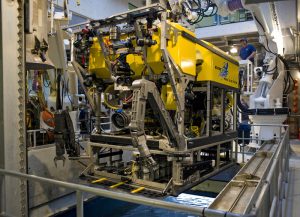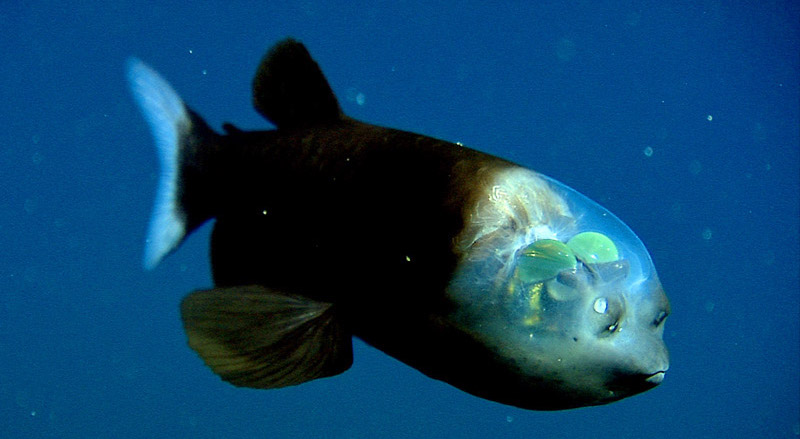Deep-sea Robots, Underwater Landslides and Creatures of Monterey Canyon
Deep-sea Robots, Underwater Landslides and Creatures of Monterey Canyon
- Registration fee: $25
- Lunch: Available to purchase
- Details: Wear comfortable walking shoes
- Organizer: Wallace Ravven
- Sponsored by: Monterey Bay Aquarium Research Institute

MBARI marine operations staff launch the remotely operated vehicle (ROV) Doc Ricketts through the “moonpool” on the research vessel Western Flyer. ROV Doc Ricketts can dive to about 4,000 meters (13,000 feet) below the ocean surface.
NOTE: Start and end times given for field trips are the times when the trips depart from and return to the Marriott Marquis San Francisco.
The three-kilometer-deep Monterey Submarine Canyon begins very near the Monterey Bay shoreline – and so very near the highly-regarded Monterey Bay Aquarium Research Institute (MBARI) at the head of the Canyon. MBARI’s proximity to the deep submarine canyon – about as deep as the Grand Canyon – gives scientists ready access to launch their underwater robots to study the biology, chemistry and geology of the deep sea.
Underwater landslides and volcanoes, as well as previously unseen deep-sea creatures, will be the focus of short presentations by marine scientists. They will describe their recent discoveries and share the challenges of deep-sea research.
The high-tech underwater robots, capable of descending more than six kilometers, are designed and built at the Institute. Visitors will meet with the MBARI engineer-designers to learn about their uses and most likely see some new exploratory instruments being built.
Depending on MBARI’s research-cruise schedule, we may be able to board the Institute’s flagship research vessel, the Western Flyer, which serves as a host vessel for car-sized remotely operated vehicles conducting research dives all along the West Coast of North America.
Visitors can enjoy lunch along the shoreline of Monterey Bay, just over the dunes from MBARI.
Above: Using remotely operated vehicles (underwater robots tethered to a research vessel), MBARI marine biologists captured the first images of this elusive deep-sea fish called the “barreleye,” and in the process, solved a fifty-year mystery about this bizarre animal. The barreleye has extremely light-sensitive eyes that can rotate within a transparent, fluid-filled shield on its head. The fish’s tubular eyes are capped by bright green lenses. MBARI researchers discovered that the eyes can point upward (as shown here) when the fish is looking for food overhead, but rotate 90 degrees to point forward when the fish is feeding. The two spots above the fish’s mouth are olfactory organs called nares, which are analogous to human nostrils.

